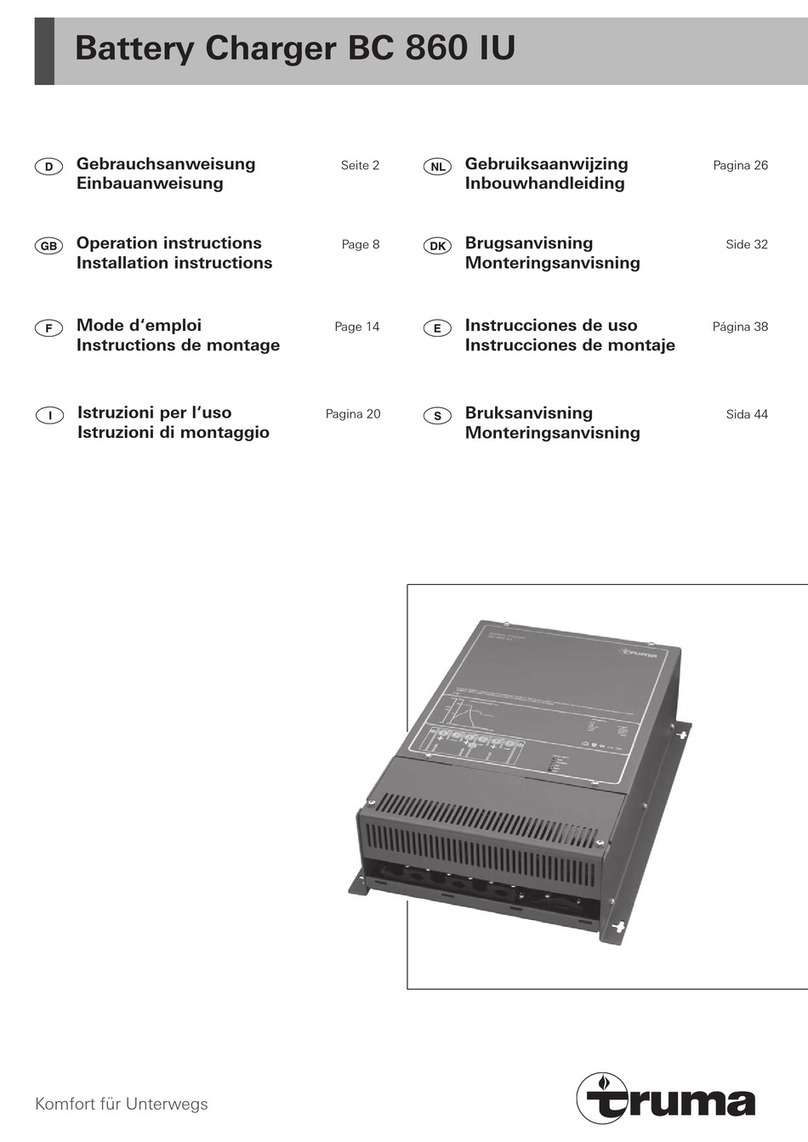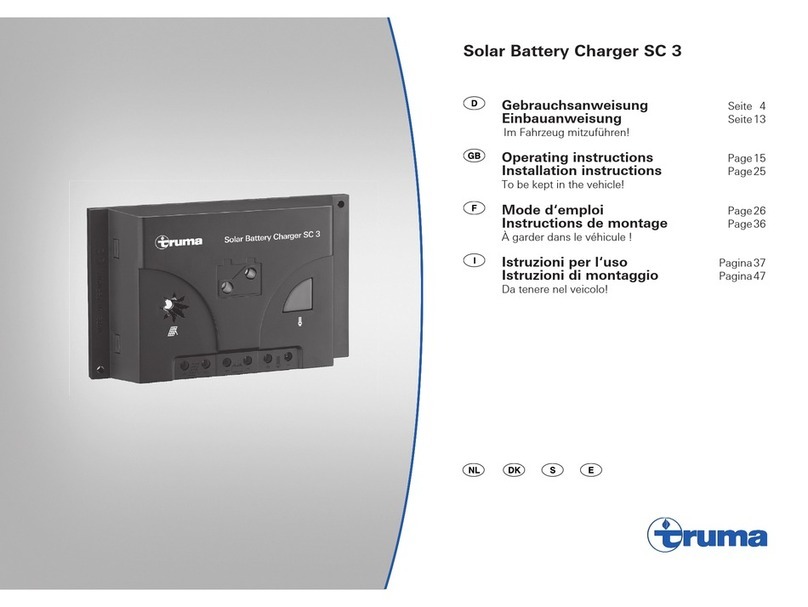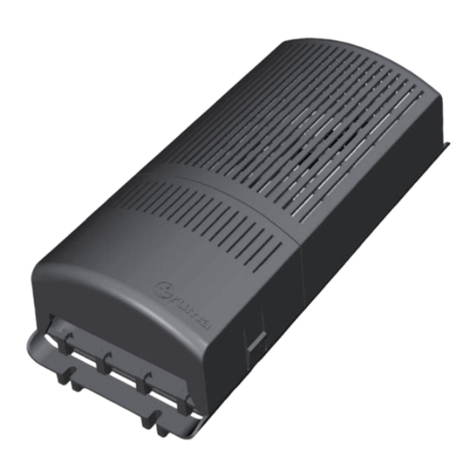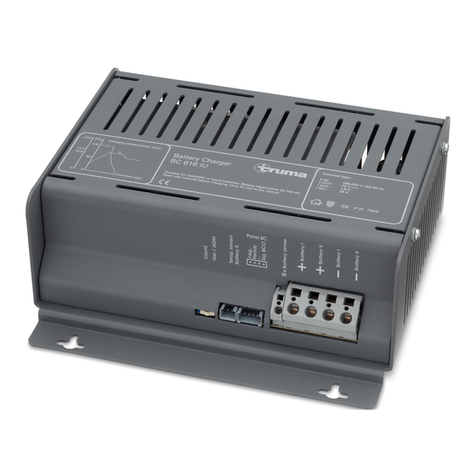
4
Schutz vor elektrischem Schlag
Betreiben Sie nur Geräte deren Gehäuse und Leitungen un-
beschädigt sind. Achten Sie auf sichere Verlegung der Kabel.
Ziehen Sie nicht an den Kabeln.
Den elektrischen Anschluss der Geräte über einen
Fehlerstromschutzschalter 30 mA Nennfehlerstrom ab-
sichern und nur so betreiben. Die jeweils geltenden örtli-
chen Installationsvorschriften beachten.
Gebrauch
Benutzen Sie keine elektrischen Geräte entgegen dem, vom
Hersteller angegebenen Verwendungszweck.
Instandsetzung
Nehmen Sie keine Instandsetzungsarbeiten oder Veränderun-
gen am Gerät vor. Wenden Sie sich an Ihren Händler oder an
den Truma Service (siehe Serviceheft oder www.truma.com).
Verwendungszweck
Das Ladegerät dient ausschließlich dem Laden von 12 V
Bleiakkumulatoren, bestehend aus 6 Einzelzellen (z. B. Auto-
batterie), mit einer Kapazität von 20 – 200 Ah. Es ist universell
einsetzbar und für Dauerbetrieb und Parallelbetrieb ausgelegt.
Das bevorzugte Einsatzgebiet des Ladegerätes sind Batterien
mit Gel-, AGM- oder Flüssigelektrolyt. Das Gerät ist für den
Einbau in Caravans bestimmt.
Netzanschluss
Der Anschluss des Versorgungsnetzes an das Gerät muss in
Übereinstimmung mit den jeweils geltenden nationalen Instal-
lationsvorschriften vorgenommen werden.
Der elektrische Anschluss 230 V darf nur vom Fachmann (in
Deutschland z. B. nach VDE 0100, Teil 721 oder IEC60364-7-721)
durchgeführt werden. Die hier abgedruckten Hinweise sind
keine Aufforderung an Laien, den elektrischen Anschluss her-
zustellen, sondern dienen dem von Ihnen beauftragten Fach-
mann als zusätzliche Information!
Das Netzkabel an die Netzverteilung des Caravans anschlie-
ßen bzw. den Netzstecker in die Steckdose einstecken.
Alle Anschlüsse auf festen Sitz prüfen.




































